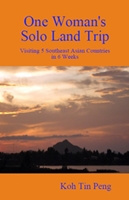The Silk Road was not only a trade route in the early centuries. It was also the route where religion spread. Travellers moving on the Silk Road, spread religion such as Buddhism from India to China. Many monks travelled from China to India and Xuanzang was the most famous Buddhist monk who went on this pilgrimage.
“Journey to the West” is a classic that was written in the 16th century and the author, although remains unclear, is most likely to be Wu Cheng’en. I have heard that this fiction is based on a true-life story of a monk who travelled west to learn more about Buddhism but didn’t know the exact background until I chanced upon a magazine “Mediation & Health” (free distribution) while having my meal a few days’ ago at a hawker centre.
As I sat there reading the magazine, I was amazed by the journey taken by Xuanzang, who embarked on the arduous journey in the 7th century. Getting contradictory teachings of Buddhism from different translations of scriptures, he believed that the true teachings of Buddhism could only be found in India. A dream also inspired him to go to India, so at the age of 29, he set out towards the west along the silk road, towards his destination Nalanda University, the largest Buddhist monastery in India. This treacherous journey lasted 17 years and during the journey, he suffered hardships and experienced hunger and thirst, wild animals and attacks from thieves and bandits, and had many close calls with death.
It sets me thinking that it’s true that facts are stranger than fiction and if you read or hear of the lives and experiences of people, it can at times be more amazing than the imaginative ideas in fiction. Some writers actually are inspired by real-life events to pen their fiction stories.
Why I am convinced that biographical accounts of people can be more engaging then those created from imagination is also because of another book that I came across. It’s a biographical account about ex-US president Theodore Roosevelt’s journey down the Amazon, the “River of Doubt”. This river is so named because the river was yet to be mapped before Roosevelt’s attempt and it was so remote and mysterious and coursed through dense forests. He and his team experienced starvation and hardships, attacks from natives and one of his men perished during the journey. Roosevelt himself almost died from disease. I might share a review of this book in another post when I get back to the book again and finish reading it.
I admired these people’s courage in going into the unknowns and taking on such challenges, as I myself too relish having adventures of my own. Of course, mine pale in comparison to these people who endured adversities, hardships and almost death.
Courage, faith and hope can triumph over hardships, distress and even death. This is the capacity of the human spirit.

![Xuanzang [From "Mediation & Health"]](https://liveexplorediscover.com/wp-content/uploads/2016/04/Xuanzang-198x300.jpg)

